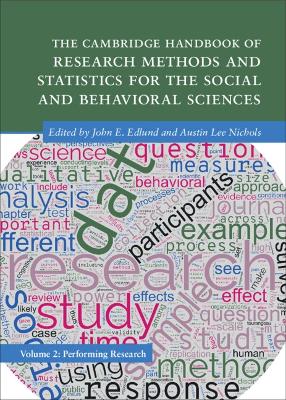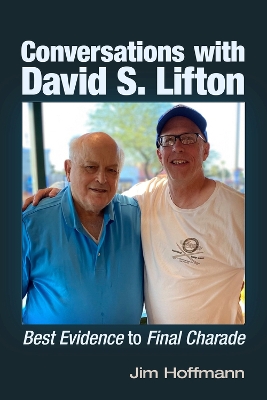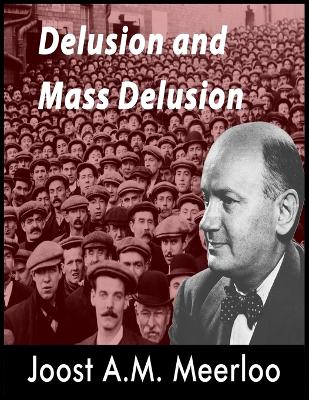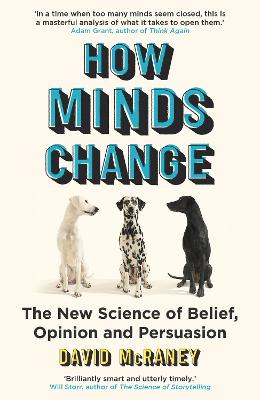Conspiracy Beliefs as Coping Behavior
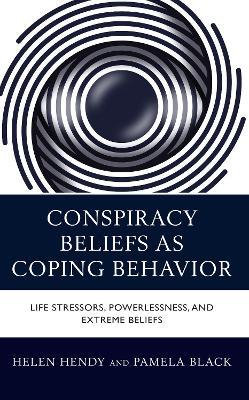 portes grátis
portes grátis
Conspiracy Beliefs as Coping Behavior
Life Stressors, Powerlessness, and Extreme Beliefs
Hendy, Helen M.; Black, Pamela
Lexington Books
11/2022
190
Dura
Inglês
9781666904031
15 a 20 dias
Descrição não disponível.
Contents
List of Tables and Figures
Acknowledgments
Introduction
Part 1. Foundations
Chapter 1. Theoretical Perspectives on Conspiracy Theory Ideation
Chapter 2. Past Research on WHO? and WHY? People Adopt Conspiracy Beliefs
Part 2. Conspiracy Theories Past and Present
Chapter 3. Conspiracy Theories in an Historical Context
Chapter 4. Contemporary Conspiracy Theories
Chapter 5. The Present Study
Part 3. Research Methodology
Chapter 6. Study Participants
Chapter 7. Survey Procedures
Chapter 8. Measurement of Study Variables
Part 4. Data Analysis and Results
Chapter 9. Demographics and Three Life Stressors
Chapter 10. Demographics and PTSD (Powerlessness)
Chapter 11. Demographics and Extreme Beliefs
Chapter 12. Life Stressors and PTSD (Powerlessness)
Chapter 13. Life Stressors and Extreme Beliefs
Chapter 14. Five Conspiracy Beliefs and Violent Ideation
Chapter 15. Does PTSD Mediate between Life Stressors and Extreme Beliefs?
Chapter 16. Do Demographics Moderate the Three-Variable Mediations?
Part 5. Summary and Conclusions
Chapter 17. Summary of Study Results
Chapter 18. Interpretation and Application of Study Results
Chapter 19. Study Limitations and Directions for Future Research
References
About the Authors
List of Tables and Figures
Acknowledgments
Introduction
Part 1. Foundations
Chapter 1. Theoretical Perspectives on Conspiracy Theory Ideation
Chapter 2. Past Research on WHO? and WHY? People Adopt Conspiracy Beliefs
Part 2. Conspiracy Theories Past and Present
Chapter 3. Conspiracy Theories in an Historical Context
Chapter 4. Contemporary Conspiracy Theories
Chapter 5. The Present Study
Part 3. Research Methodology
Chapter 6. Study Participants
Chapter 7. Survey Procedures
Chapter 8. Measurement of Study Variables
Part 4. Data Analysis and Results
Chapter 9. Demographics and Three Life Stressors
Chapter 10. Demographics and PTSD (Powerlessness)
Chapter 11. Demographics and Extreme Beliefs
Chapter 12. Life Stressors and PTSD (Powerlessness)
Chapter 13. Life Stressors and Extreme Beliefs
Chapter 14. Five Conspiracy Beliefs and Violent Ideation
Chapter 15. Does PTSD Mediate between Life Stressors and Extreme Beliefs?
Chapter 16. Do Demographics Moderate the Three-Variable Mediations?
Part 5. Summary and Conclusions
Chapter 17. Summary of Study Results
Chapter 18. Interpretation and Application of Study Results
Chapter 19. Study Limitations and Directions for Future Research
References
About the Authors
Este título pertence ao(s) assunto(s) indicados(s). Para ver outros títulos clique no assunto desejado.
Contents
List of Tables and Figures
Acknowledgments
Introduction
Part 1. Foundations
Chapter 1. Theoretical Perspectives on Conspiracy Theory Ideation
Chapter 2. Past Research on WHO? and WHY? People Adopt Conspiracy Beliefs
Part 2. Conspiracy Theories Past and Present
Chapter 3. Conspiracy Theories in an Historical Context
Chapter 4. Contemporary Conspiracy Theories
Chapter 5. The Present Study
Part 3. Research Methodology
Chapter 6. Study Participants
Chapter 7. Survey Procedures
Chapter 8. Measurement of Study Variables
Part 4. Data Analysis and Results
Chapter 9. Demographics and Three Life Stressors
Chapter 10. Demographics and PTSD (Powerlessness)
Chapter 11. Demographics and Extreme Beliefs
Chapter 12. Life Stressors and PTSD (Powerlessness)
Chapter 13. Life Stressors and Extreme Beliefs
Chapter 14. Five Conspiracy Beliefs and Violent Ideation
Chapter 15. Does PTSD Mediate between Life Stressors and Extreme Beliefs?
Chapter 16. Do Demographics Moderate the Three-Variable Mediations?
Part 5. Summary and Conclusions
Chapter 17. Summary of Study Results
Chapter 18. Interpretation and Application of Study Results
Chapter 19. Study Limitations and Directions for Future Research
References
About the Authors
List of Tables and Figures
Acknowledgments
Introduction
Part 1. Foundations
Chapter 1. Theoretical Perspectives on Conspiracy Theory Ideation
Chapter 2. Past Research on WHO? and WHY? People Adopt Conspiracy Beliefs
Part 2. Conspiracy Theories Past and Present
Chapter 3. Conspiracy Theories in an Historical Context
Chapter 4. Contemporary Conspiracy Theories
Chapter 5. The Present Study
Part 3. Research Methodology
Chapter 6. Study Participants
Chapter 7. Survey Procedures
Chapter 8. Measurement of Study Variables
Part 4. Data Analysis and Results
Chapter 9. Demographics and Three Life Stressors
Chapter 10. Demographics and PTSD (Powerlessness)
Chapter 11. Demographics and Extreme Beliefs
Chapter 12. Life Stressors and PTSD (Powerlessness)
Chapter 13. Life Stressors and Extreme Beliefs
Chapter 14. Five Conspiracy Beliefs and Violent Ideation
Chapter 15. Does PTSD Mediate between Life Stressors and Extreme Beliefs?
Chapter 16. Do Demographics Moderate the Three-Variable Mediations?
Part 5. Summary and Conclusions
Chapter 17. Summary of Study Results
Chapter 18. Interpretation and Application of Study Results
Chapter 19. Study Limitations and Directions for Future Research
References
About the Authors
Este título pertence ao(s) assunto(s) indicados(s). Para ver outros títulos clique no assunto desejado.

